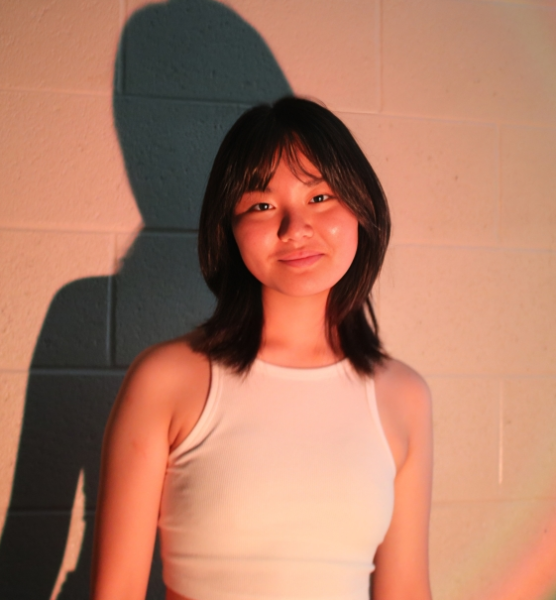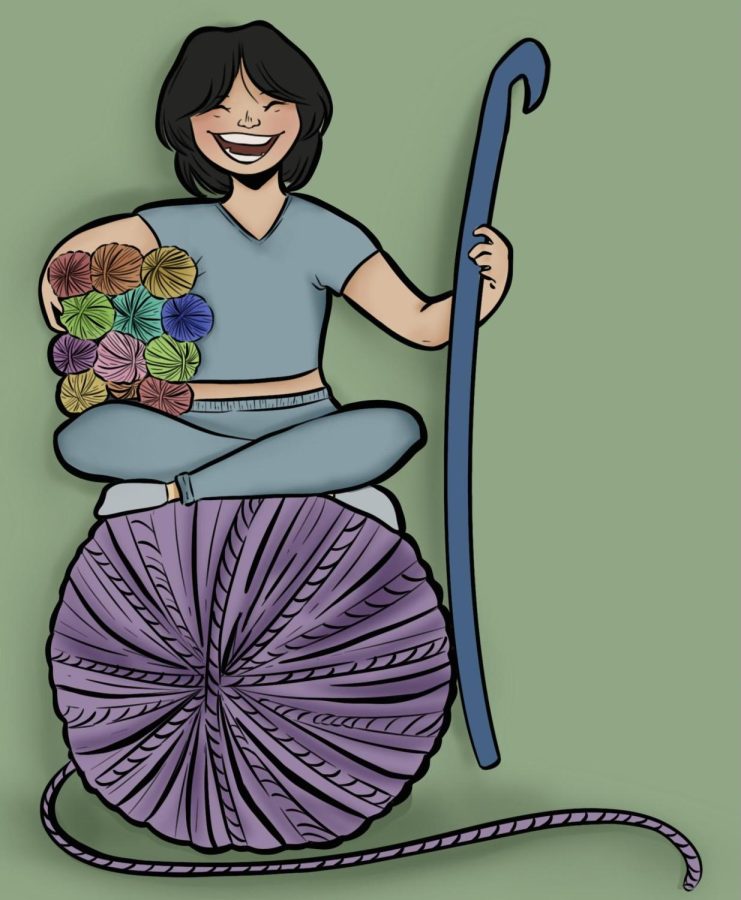Let’s Get Loopy!
Reasons why crocheting is better than knitting
In the midst of a busy summer, I revisited my old hobbies of knitting and crocheting. For the first time in years, I opened up my closet and dusted off my knitting needles and crochet hooks. I found my old yarn that had been mostly unused, and some projects I never finished—only half done, just as I had left it. Digging through the box of supplies, I found multiple old scraps I had made for practice. While doing so, I found an interesting pattern: I had at least twice as many scraps of crochet as knitting, but I had been knitting for twice as long in comparison to crocheting.
Knitting and crocheting have their similarities and differences. Both use yarn and instruments of some sort to help to create patterns, that could become clothing, blankets, and even plushies. The series of loops created within them can form multiple types of patterns that affect the texture, stiffness and style of the work. The main differences between crocheting and knitting are the tools. Crocheting uses one hook, creating knot-like patterns within the stitches. The stitches go right to the left. Each stitch is created one at a time. Knitting, however, uses two needles, going back and forth between loops, as well as going left to right. All stitches created from the beginning are directly on the needle, instead of each stitch being added on individually. Knitting is much more well known for the clothing that can be made, such as sweaters, vests, and cardigans. Crocheting is more well known for the plushies or amigurumi created. Though the two are similar, the drastic differences in detail such as patterns and stitches create a divide based on an individual’s personal preference.
I first learned to knit early in my elementary school years after watching my mother in awe, as her thin fingers seemed to dance with the needles in her hands. Knitting looked beautiful to my 8-year-old eyes, making me determined to become as good of a knitter as my mother was. So I picked up the needle and took out the yarn and began to knit. At least, I was supposed to. My knitting was atrocious. There was no other way to describe it. The stitches were extremely uneven, there were holes everywhere and the stitches were stretched out. It looked no different from a fishing net other than its extremely bright red color. With help from my mother, I tried my best to get my work to look neater. The slow progression took months of practice, but it was all worth it when I was able to create my own designs.
Crocheting, however, was another story. I watched a singular YouTube video, and I was able to do at least three different stitches in one sitting. I quickly was able to make bags, scrunchies, and clothing. It was significantly faster to learn, which made it more fun. After a year of rest, I picked crocheting back up and I was still able to recreate the projects I made in the past. On the other hand, my knitting was quite rusty. It was hard to go back to because I had gotten used to the speed of crocheting.
Out of curiosity, I performed an experiment. I made 31 knitted and crocheted stitches and timed both to see which one would be faster. As expected, crocheting was significantly faster than knitting. Knitting all 31 stitches took approximately 158 seconds. Crocheting took 143 seconds, 15 seconds less than the time it took to knit. When projects amount to thousands of stitches, subtracting 15 seconds per 31 stitches may make a significant difference in time.
While knitting and crocheting are both loved by many, I prefer the much faster-paced crochet that allows for more time for new projects. Knitting will always hold a special place in my heart as a childhood favorite that remained fun while it lasted. A time came for change and exploration, which I was able to find in an amazing craft: crocheting.
Your donation will support the student journalists of Troy High School - MI. Your contribution will allow us to print our work, purchase equipment and cover our annual website hosting costs.



